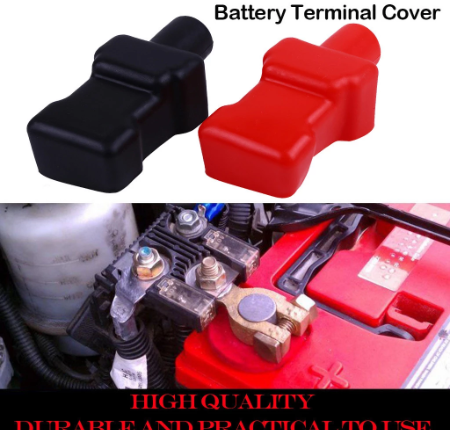Kwon’s company, Terraform Labs, raised more than $200million from investment firms such as Lightspeed Venture Partners and GalaxyDigital to fund crypto projects built with the currency, even as criticsquestioned its technological underpinnings. Luna’s total value ballooned tomore than $40 billion, creating a frenzy of excitement that swept up daytraders and startup founders, as well as wealthy investors.
Kwon dismissed concerns with a taunt: “I don’t debate thepoor.”
But last week, Luna and another currency that Kwondeveloped, TerraUSD, suffered a spectacular collapse. Their meltdowns had adomino effect on the rest of the cryptocurrency market, tanking the price ofbitcoin and accelerating the loss of $300 billion in value across the cryptoeconomy. This week, the price of Luna remained close to zero, while TerraUSDcontinued to slide.
The downfall of Luna and TerraUSD offers a case study incrypto hype and who is left holding the bag when it all comes crashing down.Kwon’s rise was enabled by respected financiers who were willing to back highlyspeculative financial products. Some of those investors sold their Luna andTerraUSD coins early, reaping substantial profits, while retail traders nowgrapple with devastating losses.
Pantera Capital, a hedge fund that invested in Kwon’sefforts, made a profit of about 100 times its initial investment after sellingroughly 80% of its holdings of Luna over the last year, said Paul Veradittakit,an investor at the firm.
Pantera turned $1.7 million into around $170 million. Therecent crash was “unfortunate,” Veradittakit said. “A lot of retail investorshave lost money. I’m sure a lot of institutional investors have, too.”
Kwon did not respond to messages. Most of his otherinvestors declined to comment.
Kathleen Breitman, a founder of the crypto platform Tezos,said the rise and fall of Luna and TerraUSD were driven by the irresponsiblebehaviour of the institutions backing Kwon. “You’ve seen a bunch of peopletrying to trade in their reputations to make quick bucks,” she said. Now, sheadded, “they’re trying to console people who are seeing their life savings slipout from underneath them. There’s no defence for that.”
Kwon, a 30-year-old graduate of Stanford University, foundedTerraform Labs in 2018 after stints as a software engineer at Microsoft andApple. (He had a partner, Daniel Shin, who later left the company.) His companyclaimed it was creating a “modern financial system” in which users couldconduct complicated transactions without relying on banks or other middlemen.
Shin and Kwon began marketing the Luna currency in 2018. In2020, Terraform started offering TerraUSD, which is known as a stablecoin, atype of cryptocurrency designed to serve as a reliable means of exchange.Stablecoins are typically pegged to a stable asset like the US dollar and arenot supposed to fluctuate in value like other cryptocurrencies. Traders oftenuse stablecoins to buy and sell other riskier assets.
But TerraUSD was risky even by the standards of experimentalcrypto technology. Unlike the popular stablecoin Tether, it was not backed bycash, treasuries or other traditional assets. Instead, it derived its supposedstability from algorithms that linked its value to Luna. Kwon used the tworelated coins as the basis for more elaborate borrowing and lending projects inthe murky world of decentralised finance, or DeFi.
From the beginning, crypto experts were sceptical that analgorithm would keep Kwon’s twin cryptocurrencies stable. In 2018, a whitepaper outlining the stablecoin proposal reached the desk of Cyrus Younessi, ananalyst for the crypto investment firm Scalar Capital. Younessi sent a note tohis boss, explaining that the project could enter a “death spiral” in which acrash in Luna’s price would bring the stablecoin down with it.
“I was like, ‘This is crazy,’” he said in an interview.“This obviously doesn’t work.”
As Luna caught on, the naysayers grew louder. CharlesCascarilla, a founder of Paxos, a blockchain company that offers a competingstablecoin, cast doubt on Luna’s underlying technology in an interview lastyear. (Kwon responded by taunting him on Twitter: “Wtf is Paxos.”) Kevin Zhou,a hedge fund manager, repeatedly predicted that the two currencies would crash.
But venture investment came pouring in anyway to fundprojects built on Luna’s underlying technology, like services for people toexchange cryptocurrencies or borrow and lend TerraUSD. Investors includingArrington Capital and Coinbase Ventures shovelled in more than $200 millionbetween 2018 and 2021, according to PitchBook, which tracks funding.
In April, Luna’s price rose to a peak of $116 from less than$1 in early 2021, minting a generation of crypto millionaires. A community ofretail traders formed around the coin, hailing Kwon as a cult hero. MikeNovogratz, CEO of Galaxy Digital, which invested in Terraform Labs, announcedhis support by getting a Luna-themed tattoo.
Kwon, who operates out of South Korea and Singapore, gloatedon social media. In April, he announced that he had named his newborn daughterLuna, tweeting, “My dearest creation named after my greatest invention.”
“It’s the cult of personality — the bombastic, arrogant, DoKwon attitude — that sucks people in,” said Brad Nickel, who hosts thecryptocurrency podcast “Mission: DeFi.”
Earlier this year, a nonprofit that Kwon also runs sold $1billion of Luna to investors, using the proceeds to buy a stockpile of bitcoin— a reserve designed to keep the price of TerraUSD stable if the markets everdipped.
Around the same time, some of the venture capital firms thathad backed Kwon started to have concerns. Hack VC, a venture firm focused oncrypto, sold its Luna tokens in December, partly because “we felt the marketwas due for a broader pullback,” said Ed Roman, a managing director at thefirm.
Martin Baumann, a founder of the Hong Kong-based venturefirm CMCC Global, said his company sold its holdings in March, at about $100per coin. “We had gotten increasing concerns,” he said in an email, “both fromtech side as well as regulatory side.” (CMCC and Hack VC declined to comment ontheir profits.)
Even Kwon alluded to the possibility of a crypto collapse,publicly joking that some crypto ventures might ultimately go under. He said hefound it “entertaining” to watch companies crumble.
Last week, falling crypto prices and challenging economictrends combined to create a panic in the markets. The price of Luna fell tonearly zero. As critics had predicted, the price of TerraUSD crashed in tandem,dropping from its $1 peg to as low as 11 cents this week. In a matter of days,the crypto ecosystem Kwon had built was essentially worthless.
“I am heartbroken about the pain my invention has brought onall of you,” he tweeted last week.
Some of Kwon’s major investors have lost money. ChangpengZhao, CEO of the crypto exchange Binance, which invested in Terraform Labs,said his firm had bought $3 million of Luna, which grew to a peak value of $1.6billion. But Binance never sold its tokens. Its Luna holdings are currentlyworth less than $3,000.
That loss is still only a drop in the bucket for a companyas large as Binance, whose US arm is valued at $4.5 billion.
“Most of the VCs have the analysts they need to assess thesethings,” Nickel said. “They may have figured they could cash out on the backsof retail.”
Much of the pain of the collapse has instead been felt byregular traders. On a Reddit forum for Luna evangelists, users shared lists ofsuicide hotlines as people who had poured their savings into Luna or TerraUSDexpressed despair.
The crash has also devastated the enthusiasts who werebuilding startups that used the crypto infrastructure developed by Kwon.
Neel Somani, 24, quit his job as a quantitative researcherat Citadel, a hedge fund, in February to work on a project that connectedLuna’s underlying blockchain to Ethereum, another crypto system.
In April, Somani joined Terra Hacker House, a monthlongprogram in a Chicago office sponsored by Terraform Labs and its investors,designed to incubate projects built on Kwon’s technology. Within a few weeks,Somani lined up $10 million in commitments for venture funding that valued hisproject, Terranova, at $65 million. He was close to hiring three employees, hesaid, and had 40 customers excited about the idea.
After Luna and TerraUSD tumbled, Somani and his fellowhackers initially thought Kwon and his partners could turn things around. Butby last Tuesday, Somani realised it was over and felt relieved he had not yetaccepted the funding. He lost around $20,000 of Luna, he said, which did notbother him, since he has made money on other risky stock and crypto bets.
Over the last week, the desks at the hacker house haveemptied. A Telegram group called Rebuilding Terra, with nearly 200 members, hasbeen actively discussing how to salvage projects and funds.
Somani is sanguine. “For those of us who are cryptobuilders, the feast and famine mentality comes really naturally, and that’smaybe what attracted us to the community,” he said.
On Thursday, he plans to pitch his now-obsolete technologyat the hacker house’s demo day. Most other groups have left the program, hesaid, so he expects less competition for a $50,000 first-place prize.
“It’s in US dollars,” he said. “I asked.”
©2022 The New York Times Company




